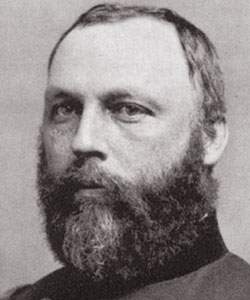William Alexander Hammond (American National Biography)
Scholarship
Hammond reenlisted six months later, at the outset of the Civil War. Still an assistant surgeon, he was soon promoted to inspector of hospitals. In April 1862 he was promoted to the post of surgeon general after intensive lobbying on his behalf by the U.S. Sanitary Commission. He gave dynamic leadership to the newly reorganized Medical Department, emphasizing centralization of authority and the pursuit of efficiency. He also used his influence to advance the cause of medical science, initiating the Army Medical Museum and the monumental Medical and Surgical History of the War of the Rebellion (1870-1883), and making books as well as instruments such as thermometers and microscopes available to medical officers. Other measures--such as increasingly stringent examinations for appointment to positions in the Medical Department, and the famous "Circular #6" of 1863 limiting the use of the common remedies calomel and tartar emetic--diminished Hammond's popularity among a large segment of the medical profession. The controversies thus engendered made it possible in 1864 for Secretary of War Edwin Stanton to have Hammond court-martialed on unrelated charges, found guilty of "conduct unbecoming an officer," and dismissed from the service.
Bonnie Ellen Blustein, "Hammond, William Alexander," American National Biography Online, February 2000, http://www.anb.org/articles/12/12-00369.html.




